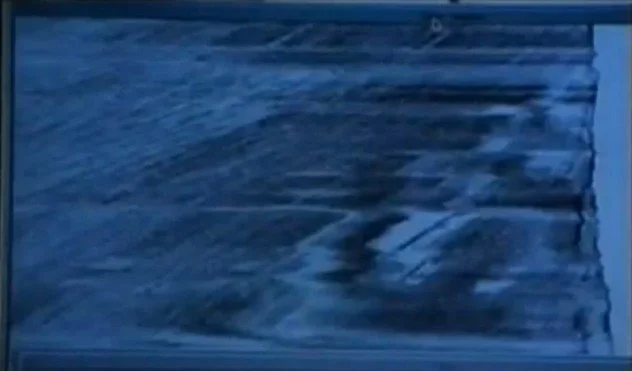Ancient writings that have remained clearly demonstrate the idea that new territory might appear from the sea while older ones might disappear beneath it, erasing earlier civilizations. Atlantis is the most well-known of the extinct continents, having been extensively described by Plato about 2,500 years ago. As humanity developed flying, sonar, and diving technologies over the previous century, a number of undersea anomalies were discovered.
Not all of the sites are, though, and usually the water's depth limits our research to sonar scans and samples collected by submersibles. Several have explored and studied in-depth places like the Bimini Road.
10 Mound in the Sea of Galilee
In 2003, a massive circular stone structure in the Sea of Galilee filled 30 feet (9 meters) of water, which astounded scientists. The structure, which is composed of basalt boulders that have been placed in a cone shape, is twice as large as Stonehenge in the UK. It could potentially be a ramp or a ceremonial structure, but according to recent archaeologists' discoveries, it shares some traits with ancient communal burial sites found all over the world. They have never seen a building of this size with its distinctive features, so they can only speculate as to the structure's exact construction date, method, and purpose.
9 Google Earth Circular Anomalies
The circular abnormalities that can be seen off the coastlines of Florida, North Carolina, and Belize have been documented by both amateurs and archaeologists. Although they are common, their purpose has not been established; many believe they were prehistoric burial mounds. Moreover, they resemble the stone structures seen in Saudi Arabia that may be seen on this website. It is believed that the underwater structures are older than those on land and may date to 8,000 BC or earlier since they have been better preserved than those on land, which have been dated to roughly 7,000 BC in Saudi Arabia.
8 Structure in Lake Macdonald, Ontario
Divers discovered evidence of Eastern Canada's ancient past in 2005 while taking part in a unique underwater expedition. The truly odd stone structure was found 40 feet (12 meters) below the surface. One massive 1,000-lb (453 kg) elongated rock with a virtually smooth surface and seven stones the size of baseballs make up the structure. This enormous stone, weighing several thousand pounds, is resting on a ledge. It was first thought to be a natural feature before geologists and archaeologists looked at the images. The discovery of the man-made "rock cairn" was deemed to be established when an underwater anthropologist judged that the presence of three shims was sufficient proof that the monument was man-made.
7 Baltic Sea Anomalies
The discovery of the disc-shaped Baltic Sea anomaly (and its following research in 2012) had everyone who was interested on the edge of their seats, regardless of whether it was a UFO, a Nazi anti-submarine defense device, or simply a glacier rock that had been carried over the sea floor.
Despite generally persuading everyone that it is a rock and not a UFO, Swedish explorers' research has generated a lot of questions. First of all, the boulder lacked a silt layer, which is often present on rocks that have remained stationary at the ocean's bottom for any length of time. The 196 feet (60 m) wide rock also looks to be supported by a 26 foot (8 m) high pillar and is covered by construction lines and boxes.
6 Lake Baikal Mystery
Southern Siberia's Lake Baikal is exceptional in many ways. It is the world's largest, oldest, and deepest freshwater lake. The lake's silt deposit is more than 4 miles (7 km) deep, and many of the fish species that survive there are unique to the lake's waters. When they noticed a fairly wide circular region of thinning ice near the southern end of the lake in April 2009, astronauts aboard the International Space Station were frightened. The lake's ice cover typically lasts into June. They were shocked to see yet another feature above the lake's dividing underwater ridge.
The unusual pattern would indicate that warmer water was transported to the surface, albeit the origin of the circles is unknown. Hydrothermal activity has never been seen over the extremely deep water at the southern extremity of the lake.
5 Lake Michigan’s Stonehenge
Despite being one of the most well-known ancient stone monuments in the world, Stonehenge in the UK is not the only one. There are similar stone configurations all throughout the world. A group of underwater archaeologists stumbled upon a circle of stones 40 feet (12 meters) below the surface of Lake Michigan in 2007 while using sonar to map the lake's bottom. A carving of a mastodon, an animal that has been extinct for 10,000 years, also appeared on one of the stones. If the site is authenticated, it wouldn't be wholly out of place because there are nearby stone circles and petroglyph sites.
4 Cuba’s Underwater City
Archaeologists, scholars, and Atlantis-hunters from all over the world were fascinated by a group of submerged structures that were found off the coast of Cuba in 2001. The symmetrical and geometric formations, which cover an area of 200 ha (almost 2 square km) at depths between 2,000 and 2,460 feet ( 700 m), were discovered by a team performing surveying work. Since it would have taken the structures 50,000 years to descend to their current depth, critics contend that the site is too deep to be man-made. The Maya and local Yucateco legends of an ancient island home to their ancestors that sunk beneath the water would be supported if concrete evidence could be produced that these constructions were created by humans.
3 Japan’s Yonaguni Monument
The enormous Yonaguni Monument off the coast of Japan has been the focus of discussion among scientists, archaeologists, and academics ever since it was discovered in 1987. Many proponents assert that although the location is natural, it may have undergone human intervention, similar to Sacsayhuaman's rock-hewn terraces. If confirmed, the site would have undergone modifications approximately 10,000 BC, during the previous ice age. On the other hand, skeptics think the entire building is natural and that the carvings and patterns that have been noticed are simply natural scratches. Despite the fact that Yonaguni's traits may be seen in numerous sandstone formations across the globe, it is implausible that there are so many suspicious formations at one location.
2 Bimini Structures
Using side-scan sonar and sub-bottom profiling, missions in 2006 and 2007 explored the deeper waters to the west of Bimini. A few rectangular features were found at a depth of 30 meters (100 feet). Straight, parallel lines connect them all in the same direction. The buildings, according to the experts, resemble those discovered off the coast of Cuba quite a bit. The formations were more clearly seen at a later dive organized by the History Channel. There are roughly 50 stone heaps, most of which measure 10 by 45 feet and are all located at a depth indicating an antiquity of 10,000 BC.
1 Gulf of Khambhat Discovery
In May 2001, it was announced that ancient city ruins had been found close to the Gulf of Khambhat. The discovery was made using sonar as normal pollution inspections were being carried out. At the announcement, it was noted that the location had residences that are evenly spaced apart, a drainage system, a bath, a granary, and a citadel that predates the Indus Valley Civilization. Further investigations involved dredging the region, where numerous objects were discovered. These were discovered around 7,000 years ago, together with wood, stones that were thought to be hand tools, petrified bones, pottery sherds, and a tooth.
All of the supposed artifacts are stones of natural origin, the "sherds" are natural geofacts, and the dredging could have picked up stray artifacts alongside the site's artefacts, raising suspicion about the discovery.
















